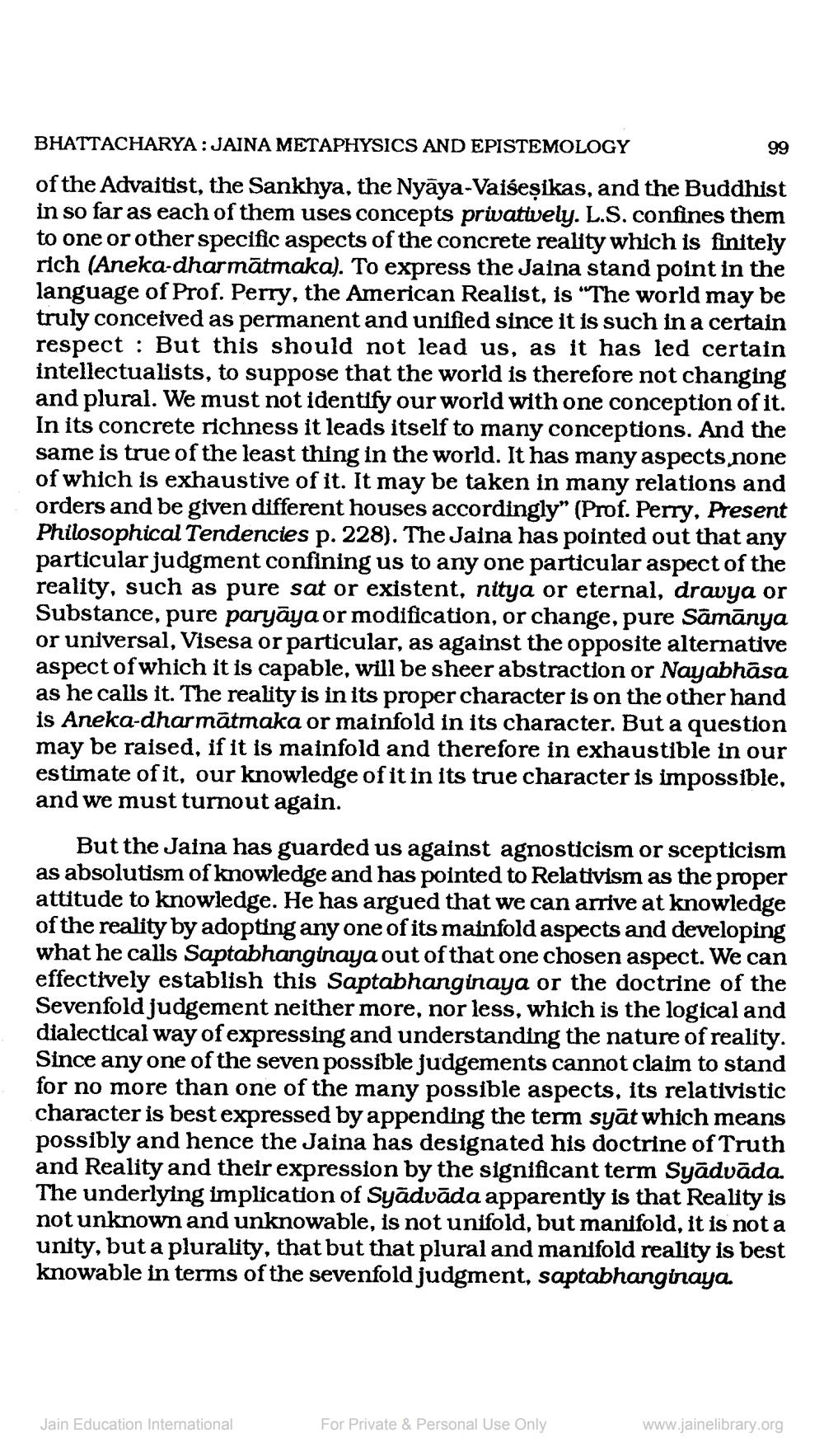________________
BHATTACHARYA : JAINA METAPHYSICS AND EPISTEMOLOGY
99
of the Advaitist, the Sankhya, the Nyāya-Vaiseșikas, and the Buddhist in so far as each of them uses concepts privatwely. L.S. confines them to one or other specific aspects of the concrete reality which is finitely rich (Aneka-dharmātmaka). To express the Jaina stand point in the language of Prof. Perry, the American Realist, is "The world may be truly conceived as permanent and unified since it is such in a certain respect : But this should not lead us, as it has led certain intellectualists, to suppose that the world is therefore not changing and plural. We must not identify our world with one conception of it. In its concrete richness it leads itself to many conceptions. And the same is true of the least thing in the world. It has many aspects none of which is exhaustive of it. It may be taken in many relations and orders and be given different houses accordingly" (Prof. Perry, Present Philosophical Tendencies p. 228). The Jaina has pointed out that any particular judgment confining us to any one particular aspect of the reality, such as pure sat or existent, nitya or eternal, dravya or Substance, pure paryāya or modification, or change, pure Samanya or universal, Visesa or particular, as against the opposite alternative aspect of which it is capable, will be sheer abstraction or Nayabhāsa as he calls it. The reality is in its proper character is on the other hand is Aneka-dharmātmaka or mainfold in its character. But a question may be raised, if it is mainfold and therefore in exhaustible in our estimate of it, our knowledge of it in its true character is impossible, and we must turnout again.
But the Jaina has guarded us against agnosticism or scepticism as absolutism of knowledge and has pointed to Relativism as the proper attitude to knowledge. He has argued that we can arrive at knowledge of the reality by adopting any one of its mainfold aspects and developing what he calls Saptabhanginaya out of that one chosen aspect. We can effectively establish this Saptabhanginaya or the doctrine of the Sevenfold judgement neither more, nor less, which is the logical and dialectical way of expressing and understanding the nature of reality. Since any one of the seven possible judgements cannot claim to stand for no more than one of the many possible aspects, its relativistic character is best expressed by appending the term syāt which means possibly and hence the Jaina has designated his doctrine of Truth and Reality and their expression by the significant term Syādvāda. The underlying implication of Syādvāda apparently is that Reality is not unknown and unknowable, is not unifold, but manifold, it is not a unity, but a plurality, that but that plural and manifold reality is best knowable in terms of the sevenfold judgment, saptabhanginaya
Jain Education International
For Private & Personal Use Only
www.jainelibrary.org




